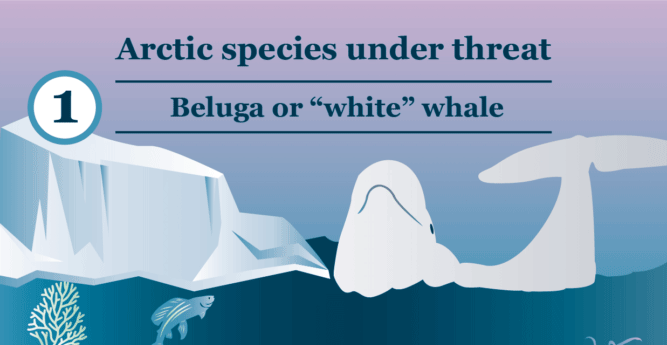The Clean Arctic Alliance today welcomed the progress made this week by the International Maritime Organization (IMO) to address the impact of underwater noise from ships on marine wildlife but warned that further delay in the development of an action program clearly setting out the next steps - including compulsory measures - will prevent significant action that would decrease vessel noise in our oceans [1].
“While the Clean Arctic Alliance welcomes the revision of the 2014 underwater noise guidelines as a milestone in its efforts to reduce the impact of underwater noise from ships on marine wildlife, we are disappointed that the IMO failed to find time to discuss a program of action or to identify the next steps that must be taken”, said Dr Sian Prior, Clean Arctic Alliance Lead Advisor. “The IMO must now prioritize the development of action including binding measures which will lead to rapid reductions in underwater noise, globally and especially in the Arctic.”
“We also welcome the significance of how the IMO’s revised guidelines acknowledge the importance of Indigenous Knowledge in understanding and addressing the threats of shipping noise, and its potential impacts on the waters of the Inuit homeland [3]. It's crucial now that the IMO also recognizes and addresses the need for additional and urgent measures to reduce the impact of underwater noise from increased shipping in the sensitive Arctic region”, added Prior.

See all infographics: Arctic Species Under Threat
A survey of the commercial shipping industry found that very few ships utilized the 2014 guidelines, and stated the greatest barrier to uptake was the fact that they are only recommendatory in nature [4]. During SDC 8 in January 2022, a working group confirmed these findings when it agreed that voluntary guidance, as opposed to regulations, was a key barrier limiting the uptake of the guidelines [5].
“The onus must now be on member states and the shipping industry to apply the IMO’s guidelines that have until now been ignored”, said Sarah Bobbe, Arctic Program Manager, at Ocean Conservancy.
“The IMO’s future work on underwater noise must include compulsory measures such as the adoption of limits on underwater radiated noise from ships so that the overall failure to reduce underwater noise is addressed globally,” added Bobbe. “In addition to global measures, even more, stringent regional measures to reduce acoustic pollution from vessels in areas such as the Arctic will be necessary”.
About Underwater Noise
For many marine organisms sound is the most important means of communication. Underwater, vision is very restricted and without good hearing ability, elementary functions such as navigating, finding prey, and partners can be hampered. This is of particular importance for marine mammals.
The Arctic has been almost free of anthropogenic sound for a long time, but with increased human activity, the Arctic Ocean is becoming noisier every year. An important source of continuous underwater noise is shipping, more specifically the propeller and the engine. Since shipping has increased substantially during the last couple of decades, underwater noise is becoming an increasing problem, contributing to a serious impact on the Arctic ecosystem. A number of Arctic species including the narwhal and beluga whales are particularly sensitive to anthropogenic noise.







